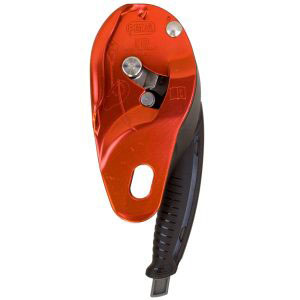![]() READER QUESTION:
READER QUESTION:
If Appendix F is non-mandatory, then why is it relevant to my PRCS program?
ROCO TECH PANEL ANSWER:
Questions often arise about the application of Appendix F of OSHA’s Permit Required Confined Spaces standard. Those questions usually focus on the “non-mandatory” characterization of the appendix. The question most often asked is:
“If it’s non-mandatory, why should I even bother with it?”
The answer is simple: even though Appendix F itself is “non-mandatory,” the methods for compliance in the appendix all relate to mandatory requirements of the standard. Appendix F is simply a non-mandatory method for complying with mandatory requirements.
The trick when evaluating the methods of compliance outlined in Appendix F is to match the particular non-mandatory provision of the appendix with the corresponding mandatory requirement of the standard. Then the employer can either use the method suggested in the appendix, or devise its own method to comply with the mandatory requirement.
 For example, with regard to outside rescue services, Appendix F paragraph A(3) asks the question: “If the rescue service becomes unavailable while an entry is underway, does it have the capability of notifying the employer so that the employer can instruct the attendant to abort the entry immediately?”
For example, with regard to outside rescue services, Appendix F paragraph A(3) asks the question: “If the rescue service becomes unavailable while an entry is underway, does it have the capability of notifying the employer so that the employer can instruct the attendant to abort the entry immediately?”
This provision does not create a mandatory requirement, but it does prompt the employer to take into account mandatory requirements of the standard. OSHA 1910.146(j)(3) makes it mandatory for the entry supervisor to terminate the entry and cancel the permit as required by paragraph (e)(5) of the standard.
Paragraph (e)(5) requires the entry supervisor to cancel the entry permit when “a condition that is not allowed under the entry permit arises…” If the particular entry requires rescue service availability and the rescue service suddenly becomes unavailable during the entry, that would be “a condition that is not allowed under the entry permit” requiring the entry supervisor to cancel the permit.
So although there is no provision that specifically states that the rescue service notify the employer if it becomes unavailable, from a practical standpoint the employer cannot comply with the requirement that it cancel the permit and terminate the entry when a condition not allowed under the entry permit arises unless such a notification system is in place. This is just one example of how the provisions of non-mandatory Appendix F provide a method to comply with mandatory requirements.
When considering the provisions of non-mandatory Appendix F, the employer would be wise to determine which mandatory provisions the method stated in the appendix addresses. Of course, the employer is free to choose some other method to comply with the mandatory provision and does not necessarily have to follow the method suggested in the appendix. In that sense, the appendix is “non-mandatory.” But, nonetheless, the employer must comply with the underlying mandatory provision, and take any steps necessary to do so.


 (2) Location
(2) Location  So, what is the design load? Typically, it is the amount of weight/force a device or a system can handle; or the load that it is designed to handle. Once it has met the design load requirement for NFPA, it is placed in an equipment category and tested accordingly. In the case of the ID, it is tested as a descent control device. According to NFPA, General Use descent control devices shall withstand a minimum test load of at least 22 k/N (4946 lbf) without failure. I know what you’re thinking, “Hey, that’s not anywhere near the 9000 lbf we’re used to hearing for General Use?” NFPA requires that rope and carabiners be rated at 8992 lbf with pulleys and some other auxiliary items at 8093 lbf. Rope grab device shall withstand a minimum test load of at least 11 k/N (2473 lbf) without sustaining permanent damage to the device or rope to meet General Use. So, there is a wide range of strength requirements in NFPA 1983 depending on what category an item is tested in.
So, what is the design load? Typically, it is the amount of weight/force a device or a system can handle; or the load that it is designed to handle. Once it has met the design load requirement for NFPA, it is placed in an equipment category and tested accordingly. In the case of the ID, it is tested as a descent control device. According to NFPA, General Use descent control devices shall withstand a minimum test load of at least 22 k/N (4946 lbf) without failure. I know what you’re thinking, “Hey, that’s not anywhere near the 9000 lbf we’re used to hearing for General Use?” NFPA requires that rope and carabiners be rated at 8992 lbf with pulleys and some other auxiliary items at 8093 lbf. Rope grab device shall withstand a minimum test load of at least 11 k/N (2473 lbf) without sustaining permanent damage to the device or rope to meet General Use. So, there is a wide range of strength requirements in NFPA 1983 depending on what category an item is tested in.


